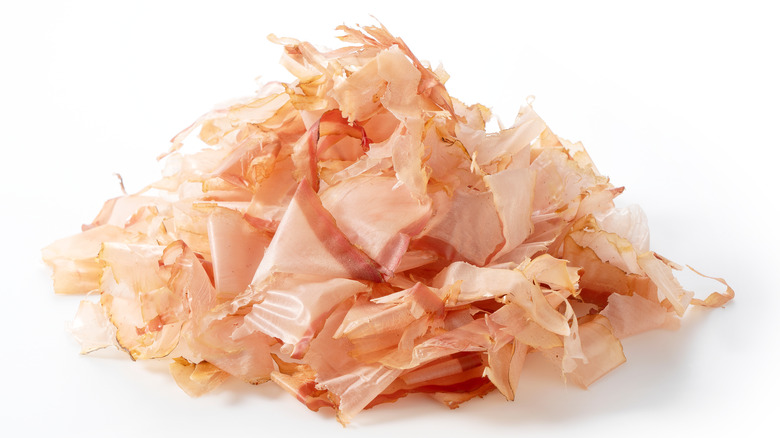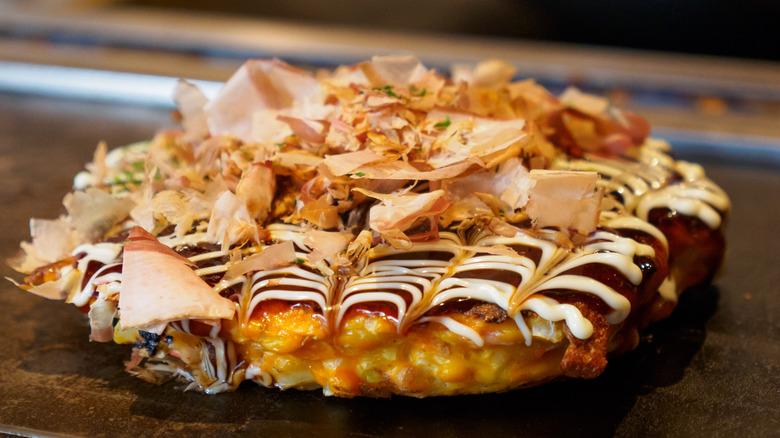Why Bonito Flakes Are An Ingredient In So Many Japanese Dishes
Umami is an essential part of Japanese cuisine. Delineated as one of the five main tastes around 40 years ago, according to The Spruce Eats, it has a savory flavor that enhances everything else in the dish. The right amount of umami can produce an ideal response in the brain. Anyone who has read or seen "Food Wars" laughs at the outlandish goofiness that ensues with the perfect amount of umami, notes Fandom.
Bonito flakes, or katsuobushi, are as common in Japanese cuisine as salt and pepper in American dishes because they bring umami to the dish. They're commonly found boiled in broth (dashi) and several other Japanese dishes, says Atlas Obscura. Instead of cat treats, Japanese pet owners reward their felines with bonito flakes.
Traditionally, bonito flakes come from the process of curing a slab of skipjack tuna, called "bonito" in Japan, and then shaving the slab into paper-thin slices. Curing lasts so long, sometimes more than a year, that the meat turns as hard as timber. The curing process concentrates one particular type of flavor into the meat, which is the reason why bonito flakes are ubiquitous in Japanese cuisine.
High levels of inosinate make them wildly popular
Soaring levels of inosinate in bonito flakes create a ton of umami flavor in dishes, according to The Spruce Eats. It pairs with glutamate to increase umami in a wide range of dishes, most notably dashi, which combines kelp (glutamate) with bonito (inosinate). Dashi is a class of broths that forms the basis of miso, soba, and many types of Japanese soups, says Bon Appétit.
Gourmet chefs, home cooks, and food carts in Japan alike have bonito flakes at the ready. Atlas Obscura says you'll find bonito flakes in okonomiyaki (savory, thick pancakes as big as a plate), takoyaki (fried balls with small pieces of octopus), and as the centerpiece of onigiri (stuffed rice balls).
When added to boiling water, bonito flakes quickly dissolve due to their lightness. Bonito flakes have varying ranges of slightly salty, smoky, and fishy tastes. The flavors all add up to umami to complete the cuisine. When chefs place katsuobushi on top of steamed rice, the flakes look as if they're swaying in the wind, an illusion that makes it look like the garnish is dancing or the dish is on fire, notes The Spruce Eats.
This happens because the bonito flakes are sliced very thin and airy, and the steam rising from the surface of the rice makes the flakes move back and forth. So, these tasty flakes not only make for a beautiful presentation but bump up the satisfying savoriness of any dish.

